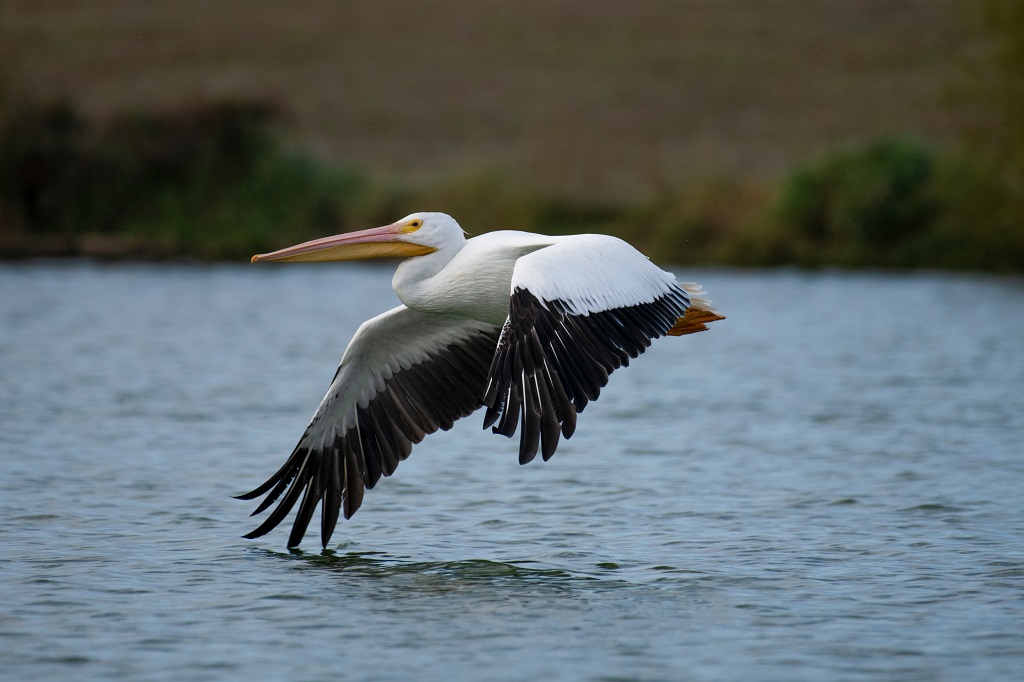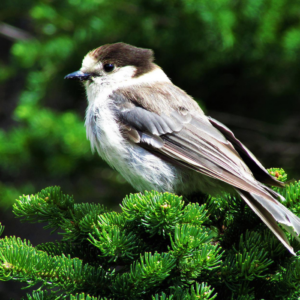Get To Know This Year’s Featured World Migratory Bird Day Species: American White Pelican

Vital Signs
- Common name: American White Pelican
- Latin name: Pelecanus erythrorhynchos
- Range: During the summer their breeding grounds span parts of Alberta, Saskatchewan, and Manitoba, as well as parts of the northern United States. When fall arrives they migrate towards their wintering grounds located along the eastern and western coasts of the southern United States and Mexico.3
- Average Lifespan: 12 to 30 years4
- Size: Length of 127-165 cm with a wingspan of 244-290 cm, typically weighs 4500-9000 g2
- Population estimate: 100,000 to 200,000 in Canada1
The Facts
The American White Pelican is one of the largest birds native to North America. In the summer they live and breed on islands and shallow wetlands in the interior of the continent, while during winter they migrate toward the southern North American coasts. The American White Pelican is mostly white, with black feathers along the edge of their wings. Their long yellow-orange bill can sometimes be seen with a small bump on the tip of its bill. This bump, or caruncle, grows each year during mating season for both male and female pelicans and helps them attract a mate. Once mating season ends, the caruncle falls off and will be regrown again before the next year’s mating season.2
When breeding, the American White Pelican makes their nests in nesting colonies near other pelicans on islands in freshwater and saline lakes. The female will lay two eggs, although usually, only one sibling survives after it harasses the other. After hatching, the young pelicans will live in the nest for two to three weeks before leaving, although the parents still forage for them for some time after.3
The American White Pelican’s diet mainly consists of fish and other small creatures they can find, such as crayfish. They forage more often at night and use the expandable pouch in their bill to scoop up fish before eating them.3
The Story
The American White Pelican is considered to be a species at low risk of becoming endangered. Their numbers have been on a steady incline since around the 1970s. Before that, they were under threat from humans for multiple reasons. Their breeding grounds were being disturbed due to human expansion and recreational activities. They have also faced declines in the past due to habitat loss caused by water management and pesticide contamination. They were also frequently hunted for sport because it was thought that they competed with humans for fish. We have since learned they typically eat fish that hold little commercial value to humans, and the rate at which they have been hunted has greatly decreased.2
What you can do
While currently, their numbers are increasing, the American White Pelican faces many of the same risks that other waterfowl are facing. In their case, since they are concentrated at nesting colonies during the breeding season, they are at risk more so than other species of falling victim to disease outbreaks, weather events, and habitat loss. In Canada, the American White Pelican has been identified as a priority for conservation and stewardship strategies. Environment Canada aims to maintain their current numbers through habitat protection and careful population monitoring.1
With that being said, advocating for the conservation of wetlands in Canada, and the advocation for the conservation of nature, in general, is a great way to support the American White Pelican.
You can also get involved with a local Bird Team in your community to work towards becoming Bird Friendly City Certified or host and participate in an upcoming World Migratory Bird Day event near you!
Sources:
1 Canadian Wildlife Service Waterfowl Committee. 2015. American White Pelican (Pelecanus erythrorhynchos). https://wildlife-species.canada.ca/bird-status/oiseau-bird-eng.aspx?sY=2014&sL=e&sM=a&sB=AWPE
2 The Cornell Lab. All About Birds, American White Pelican.https://www.allaboutbirds.org/guide/American_White_Pelican/overview
3 Boreal Songbird Initiative. Guide To Boreal Birds, American White Pelican. https://www.borealbirds.org/bird/american-white-pelican
4 Sanctuary Integrated Monitoring Network. Species Database, American White Pelican. https://sanctuarysimon.org/dbtools/species-database/id/342/pelecanus/erythrorhynchos/american-white-pelican/
This project was undertaken with the financial support of the Government of Canada through the federal Department of Environment and Climate Change.
Ce projet a été réalisé avec l’appui financier du gouvernement du Canada agissant par l’entremise du ministère fédéral de l’Environnement et du Changement climatique.




